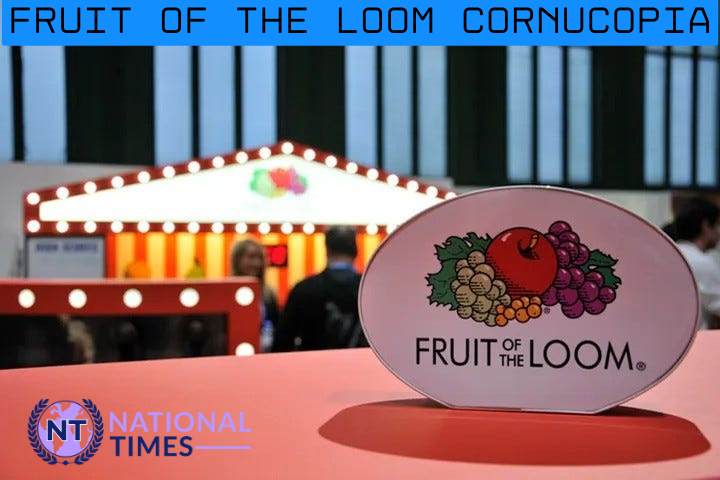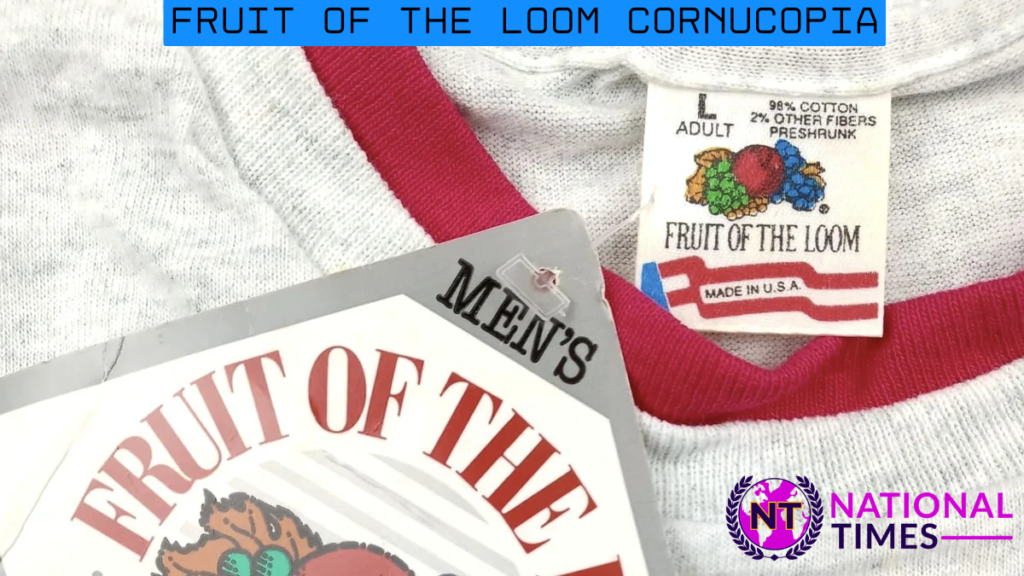Fruit of the loom cornucopia is a well-known clothing brand that has provided us with comfortable and high-quality garments for years. One of its most iconic symbols is the logo, which has sparked much debate, especially about the cornucopia, a horn-shaped basket. But does the Fruit of the Loom logo really feature a cornucopia? In this article, we’ll explore the story behind the logo, its meaning, and how it has changed over time.
The Story Behind Fruit of the Loom
Fruit of the Loom is a globally recognized company that has been producing high-quality apparel for more than a century. Founded in 1851, the company originally focused on making textiles, and over time, expanded to include t-shirts, underwear, and other everyday clothing essentials. The brand quickly became a staple in American households, thanks to its focus on comfort, durability, and affordability.
As the company grew, it also made strides in marketing. One of the most significant elements of its branding was the logo, which features a group of fruits in vibrant colors. This logo is recognized worldwide and has remained largely unchanged since its creation. However, the true meaning behind the logo and its connection to the cornucopia has long been a subject of confusion and debate.
What Is a Cornucopia?
A cornucopia, also known as the “horn of plenty,” is a symbol often associated with abundance and prosperity. The cornucopia is traditionally depicted as a horn-shaped container overflowing with fruits, vegetables, and other bountiful items. It is a classic emblem used to represent harvest, wealth, and the blessings of nature. Its origins date back to ancient Greece and Rome, where it was considered a symbol of abundance.
In modern times, the cornucopia is commonly seen around Thanksgiving, with images of it adorning decorations, cards, and advertisements that celebrate the fall harvest. So, when many people look at the Fruit of the Loom logo, they may assume that it is a depiction of a cornucopia, especially because the logo contains an arrangement of fruits.
Does the Logo Have a Cornucopia?
Despite popular belief, the Fruit of the Loom logo does not actually feature a cornucopia. The company’s logo showcases a collection of fruits such as apples, grapes, and leaves, but the design does not include the horn-shaped basket traditionally associated with a cornucopia.

A Look at the Real Logo
If we take a closer look at the actual logo, we can see that it’s simply an arrangement of various fruits. The colorful fruits are arranged in a way that gives them a vibrant and inviting appearance, but there is no horn or basket that would make it a cornucopia. The confusion likely arises because the design includes elements associated with abundance—fruits, in this case—but it is not a cornucopia in the traditional sense.
Where the Cornucopia Idea Began
The confusion over whether the logo includes a cornucopia likely began because of the association of fruit and abundance. The idea of a cornucopia. Has been widely used. In marketing and branding over the years to symbolize abundance. Many people are simply used to seeing cornucopias when they think of a collection of fruits, especially around holidays like Thanksgiving, where the symbol is commonly used.
Why People Still Believe It’s There
So, why do people still believe that the logo features a cornucopia? The idea of a cornucopia is deeply embedded in Western culture, and it’s natural for individuals to associate the image of various fruits with a cornucopia. This has led to a widespread misconception that the Fruit of the Loom logo depicts a cornucopia, even though it doesn’t.
Bio Table
| Attribute | Details |
|---|---|
| Name | Fruit of the Loom |
| Founded | 1851 |
| Founder(s) | Robert and Benjamin Knight |
| Headquarters | Burlington, Massachusetts, USA |
| Industry | Apparel, Textiles |
| Key Products | T-shirts, Underwear, Socks, Activewear |
| Logo Description | Fruits, Leaves, No Cornucopia |
| Famous For | High-quality, affordable clothing |
| Website | www.fruit.com |
| Tagline | “Fruit of the Loom – A part of your world.” |
Fun Facts About the Logo
The Fruit of the Loom logo has an interesting history and several fun facts that people might not know. One of the most interesting things about the logo is that the original design was much simpler than what we see today. The original logo, created in the late 1800s, only featured a single fruit—the grape. Over time, the company expanded the logo to include more fruits, eventually creating the colorful, vibrant design we know today.
Another fun fact is that the logo has not changed much over the years. While many companies go through frequent redesigns and updates, Fruit of the Loom has kept its iconic design intact, which has helped the logo become a recognizable symbol worldwide.
How the Logo Has Changed Over Time
Although the Fruit of the Loom logo has remained relatively consistent over time, it has undergone a few minor tweaks. In the early 20th century, the logo saw some refinement, such as the addition of more fruits to make it look fuller and more vibrant. The overall design has remained true to its original concept, with the fruits always being the focal point.
The brand has also modernized its approach to marketing, adapting the logo to suit different media and packaging. However, the fruits have remained a central element of the logo, helping to maintain the brand’s identity. In recent years, the company has also embraced digital branding, ensuring that the logo is versatile and can be used across various platforms and formats.
Why Is the Logo So Memorable?
The Fruit of the Loom logo is memorable for several reasons. One of the key factors that contribute to its recognizability is its simplicity. The logo is easy to understand, with no complicated symbols or abstract shapes. The vibrant colors and the recognizable fruits make it appealing and immediately recognizable to consumers.

The Colors of the Logo
The bright, vivid colors of the fruit of the loom cornucopia logo play a significant role in its memorability. The red apple, purple grapes, and green leaves stand out and create a harmonious color palette. The colors also convey a sense of freshness and vitality, which are qualities that the brand wants to associate with its products.
The Fruits in the Logo
The fruits themselves are also an important part of what makes the logo memorable. The apples, grapes, and leaves are all common symbols of health, abundance, and nature. These elements help convey the idea that Fruit of the Loom products are natural, fresh, and of high quality. The inclusion of these fruits has made the logo not just memorable but also relatable to people from all walks of life.
What It Represents
At its core, the Fruit of the Loom logo represents the values of the company—quality, comfort, and abundance. The fruits symbolize the natural, wholesome ingredients that the brand aims to provide in its products, such as soft fabrics and durable clothing. The logo has become a symbol of trust and reliability over the years, which is why it continues to be so memorable.
Other Logos That Confuse People
There are several logos that, like the Fruit of the Loom logo, have caused confusion among the public. For example. The famous logo of the popular fast-food chain Wendy’s often leads people. To believe that the character in. The logo. Is. Meant. To represent a young girl. But it is actually just a playful representation of the brand. Similarly, many people have mistakenly believed that. The Coca-Cola logo was created by a famous artist, when in fact, it was designed by a simple draftsman.
The Bottom Line
In conclusion, while the Fruit of the Loom logo may seem like it features a cornucopia, the truth is that it does not. The logo simply showcases an arrangement of colorful fruits, which are symbols of abundance and quality. Despite the confusion, the logo’s design has stood the test of time, remaining largely unchanged and deeply ingrained in the public’s mind. Whether or not the logo contains a cornucopia, one thing is clear: Fruit of the Loom’s branding continues to represent the values of comfort, quality, and reliability that have made it a household name.






